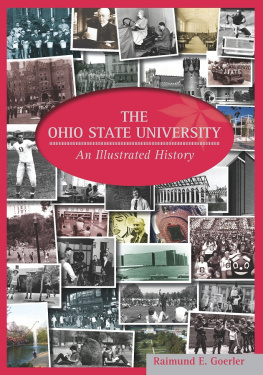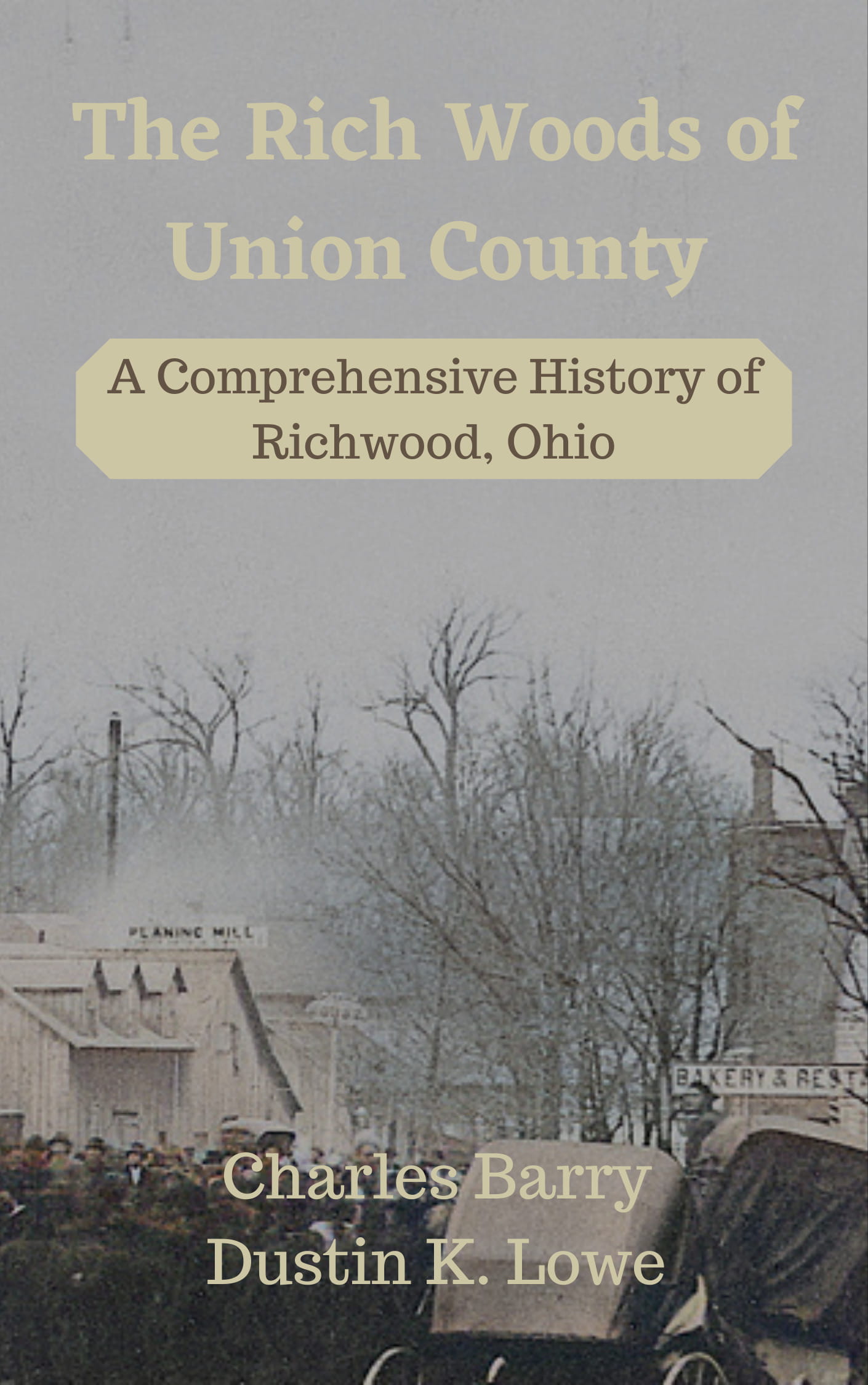Dustin K. Lowe
The Rich Woods of Union County
A Comprehensive History of Richwood, Ohio
Copyright 2021 by Charles Barry and Dustin K. Lowe
All rights reserved. No part of this publication may be reproduced, stored or transmitted in any form or by any means, electronic, mechanical, photocopying, recording, scanning, or otherwise without written permission from the publisher. It is illegal to copy this book, post it to a website, or distribute it by any other means without permission.
Designations used by companies to distinguish their products are often claimed as trademarks. All brand names and product names used in this book and on its cover are trade names, service marks, trademarks and registered trademarks of their respective owners. The publishers and the book are not associated with any product or vendor mentioned in this book. None of the companies referenced within the book have endorsed the book.
Published by Lake Baccarat Press
Images obtained with permission by Charles Barry and the Richwood-North Union Public Library
DustinLowe.com
Dedicated to everyone in the community of Richwood who has continued to keep this small village and its history alive.
History is a cyclic poem written by time upon the memories of man.
Percy Bysshe Shelley
Preface
The United States, along with Ohio, has been occupied and lived on long before Europeans came to settle the land. The natives of Ohio were known as the Hopewell culture. The Hopewell were an innovative and sophisticated culture built by a collection of tribes. Despite their differences, these tribes had one thing in common: they were engineers. This culture was known to build mounds. While they werent the first mound builders, they certainly were one of the best. They specialized in geometric shapes like circles, squares and octagons with parallel lines connecting these shapes into a coherent complex. This culture emerged around 200 BC and started to die out circa 400 AD. The place that we call Ohio was the epicenter of this culture. Though the culture spread throughout the Great Lakes region and the Ohio and Mississippi valleys. We should also note that we dont know what these Indians called themselves. We use the name Hopewell only because artifacts relating to this culture were found in the late 19th century on a farm owned by a man whose last name was Hopewell.
We cant even use the term Ohio to describe the place where these Hopewell Indians lived. Thats an invention of a later day. So how exactly did the Hopewell spread their influence throughout the eastern North Americas? The answer is the Hopewell Interaction Sphere. This sphere can be defined as a decentralized power structure that organizes diverse groups into a cohort system of cultural and technological exchange. It helps to contrast the interaction sphere with an empire. Pick any empire in the history of the world. In most empires, you see a large-scale military, bureaucracy collecting and spending taxes, powerful leaders guiding the agenda of this empire. They seek to impose its will on people.
But the interaction sphere had none of that. They spread their influence and prosperity by enticing people rather than coercing them. The first element of the Hopewell Interaction Sphere is the Mississippi River system. Remember at this time two thousand years ago that there are no cars, planes nor even horses in North America. To travel, you either had to go by foot or by water. Remember that the Hopewell Interaction Sphere had as its goal to spread prosperity and ideas and entice people to join in this collection of tribes and enrich each others life. To do that, you have to travel. So, water is the first main element of the Hopewell Interaction Sphere.
Water leads to our next big element: exchange. The Hopewells trading network nearly matched the Mississippi River system; thats not a coincidence. The items they exchanged also were not found in Ohio such as shark teeth, copper, knife river chert and silver. Also note that these items are luxuries, not necessities. This means that the Hopewell had a decision to make: Do we want to be self-sufficient? They could have fed and protected themselves without ever engaging the wider world; without ever taking the risk of talking to someone who didnt think or look like they did. They decided instead that they would be better off in dealing with strangers. But that meant having to offer something to these strangers. They instead participated in mutually beneficial specialization.
This idea should sound familiar to you. Our global trading network is much larger than the continental network that the Hopewell culture created. But the principle is the same. Both you today and the Hopewell two thousand years ago decided to take a risk to find out how strangers can enrich your life. Today, we rely on large, centralized organizations to make that process work. This includes private companies, national governments, international trade organizations, and even the U.S. military to make these processes work. But two thousand years ago, based out of a place that we call Ohio, the Hopewell managed this complicated process without large-scale coercive institutions. And they did so to acquire exotic materials not normally found in Ohio.
Take for example mica from western North Carolina. It is a brittle and fragile mineral thats not any good for making tools. It did, however, lend itself to delicate arts and crafts. How did they acquire these exotic materials? Technology. By technology, I quite literally mean mounds of dirt. The Newark Earthworks is perhaps the most significant of all the Hopewell mounds. The complex is located in Newark, Ohio and exists today as mainly circles and octagons. But the scale of this complex makes the wonders of the ancient world pale in comparison. Just one of the Giza pyramids fits in a small square at the complex and four coliseums in Rome fit into the octagon. The scale is remarkable precisely because the Hopewell had no urban centers. There was no density of population and they were a non-hierarchal society. So where did the labor come from and who did what and when and for how long? We have no idea.
But now we have to answer a pressing and related question: what does any of this have to do with technology? These piles of dirt are in reality a lunar observatory as it tracks the moon across the sky throughout its eighteen-and-a-half-year cycle. The moon at key moments in its journey lines up with openings in the octagon when the moon hits its most northerly extreme point. It lines up directly with the center of the octagon and the observatory circle. Thats no easy feat. Scientists will tell you that tracking the motions of the moon are notoriously difficult. The Newark Earthworks combined both science and spirituality in the search for meaning.
So, what exactly happened to the Hopewell culture? If we look at the three things they did welltechnology, exchange and religionwe see that around four or five hundred AD, something changed. For example, mound building declined, and the exchange network deteriorated. Ceremonies also subsided as pilgrims stopped coming to the place we call Ohio; they stopped seeking out that transformative scientific religious experience that the Newark Earthworks offered. We see an entirely new culture emerge in Ohio by 1000 AD. We call this culture the Fort Ancient culture. Though, as with the Hopewell, we have no idea what they really called themselves. Its interesting to note that this new culture had no clear genetic links to the Hopewell or their ancestors. In other words, the people of the Hopewell culture had disappeared, and we dont know what happened to them.











